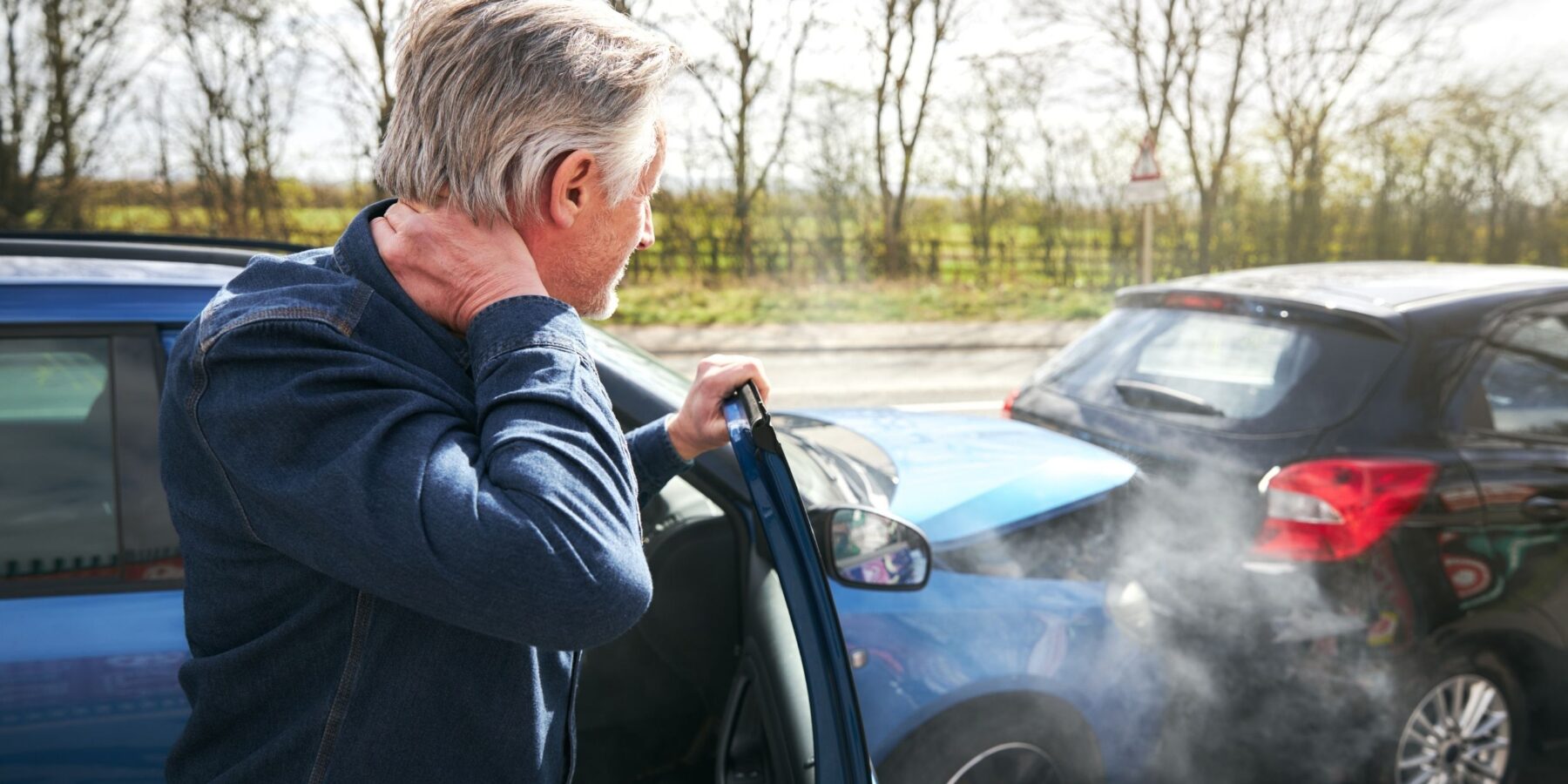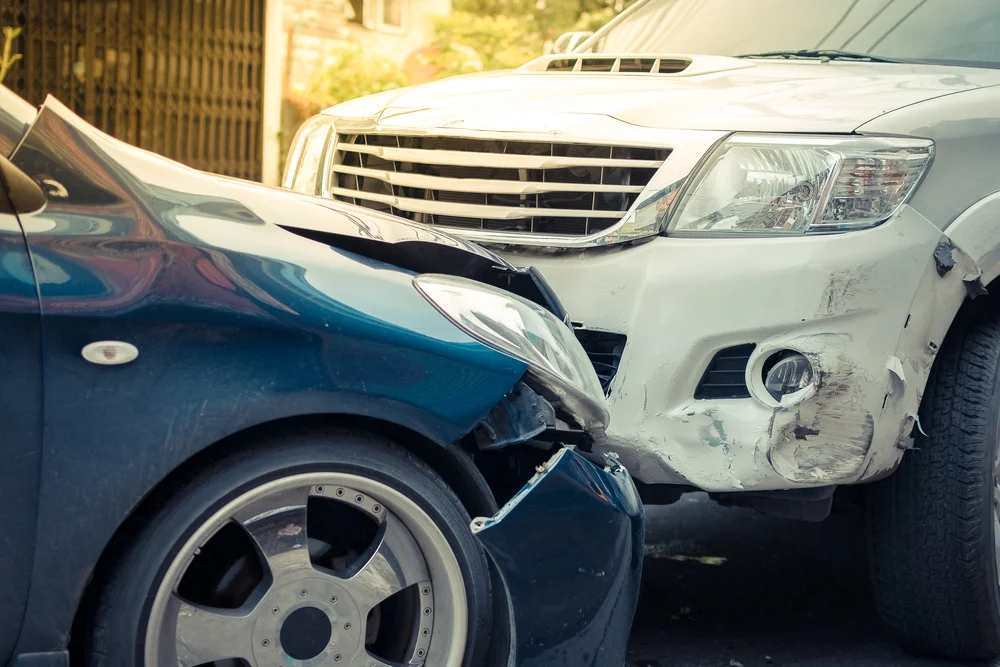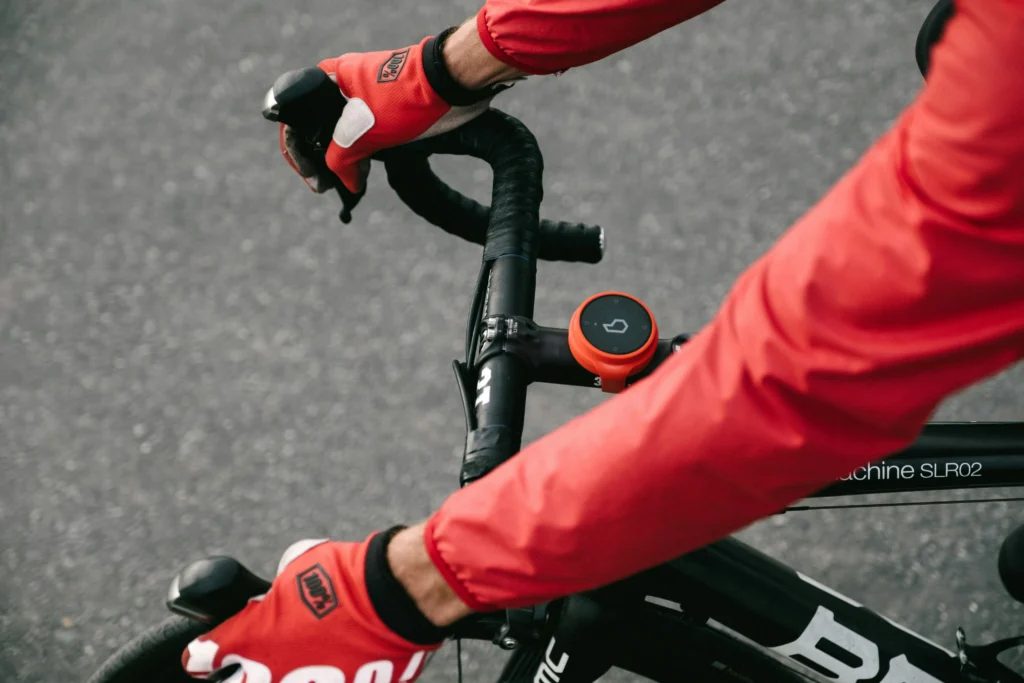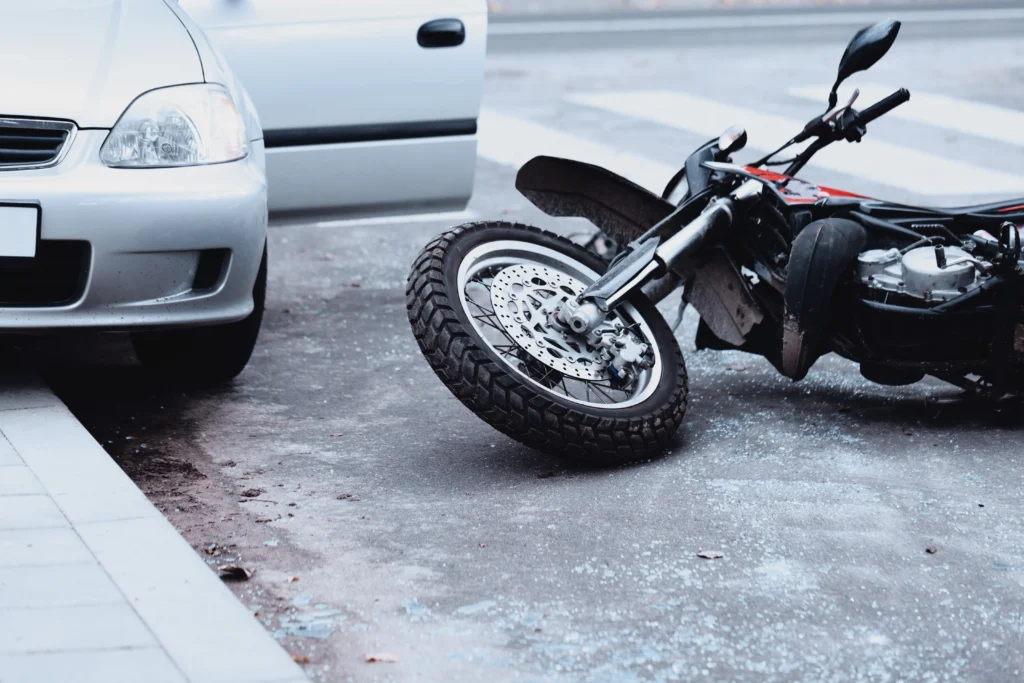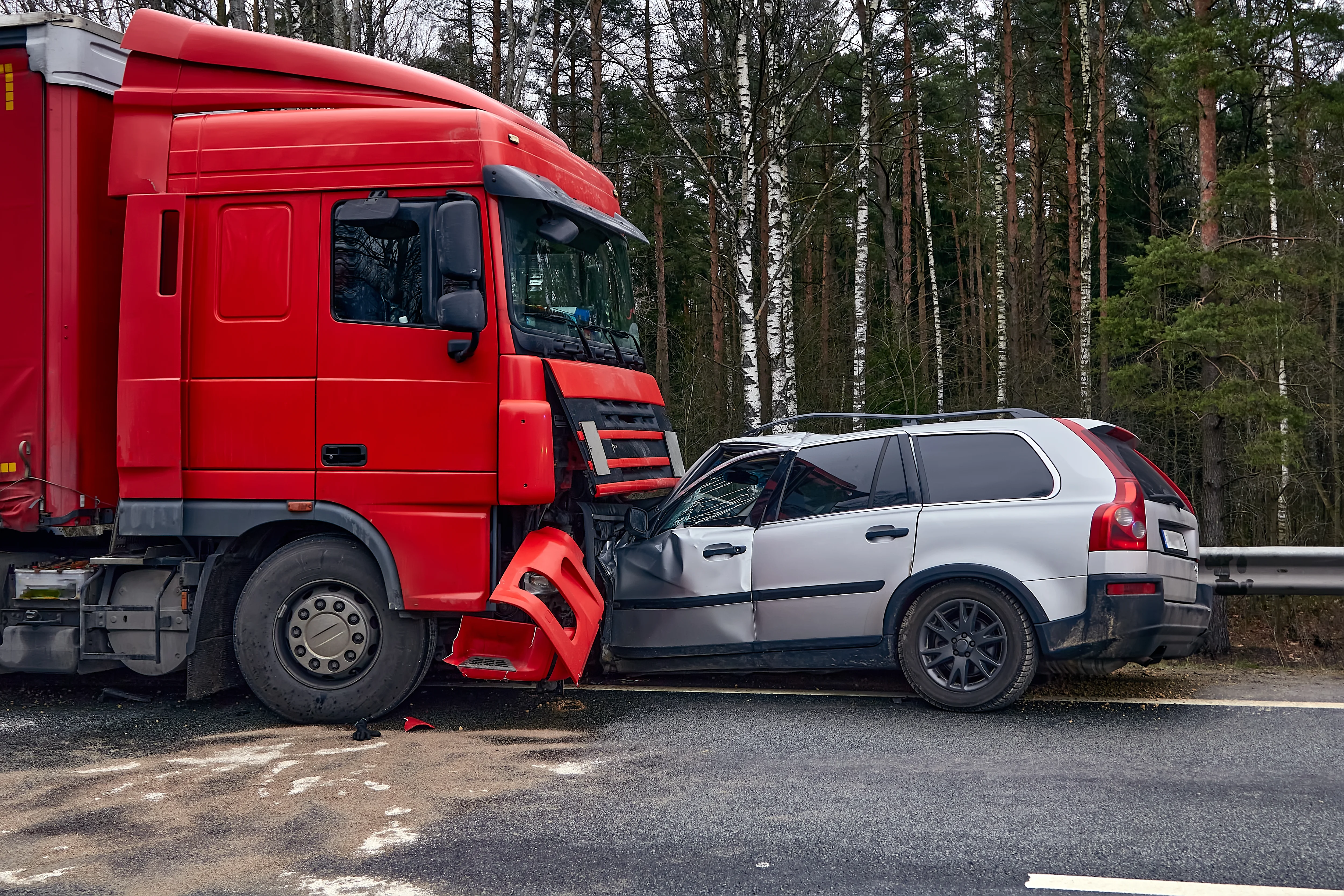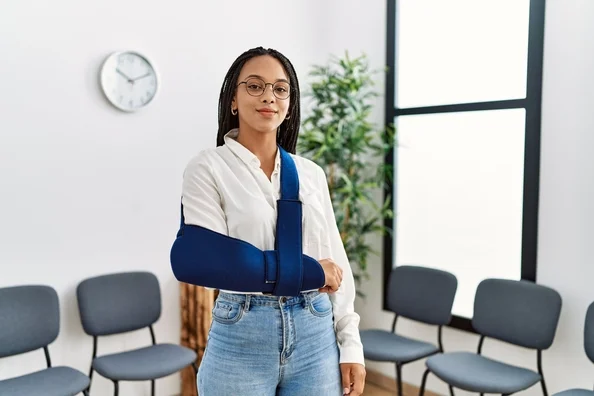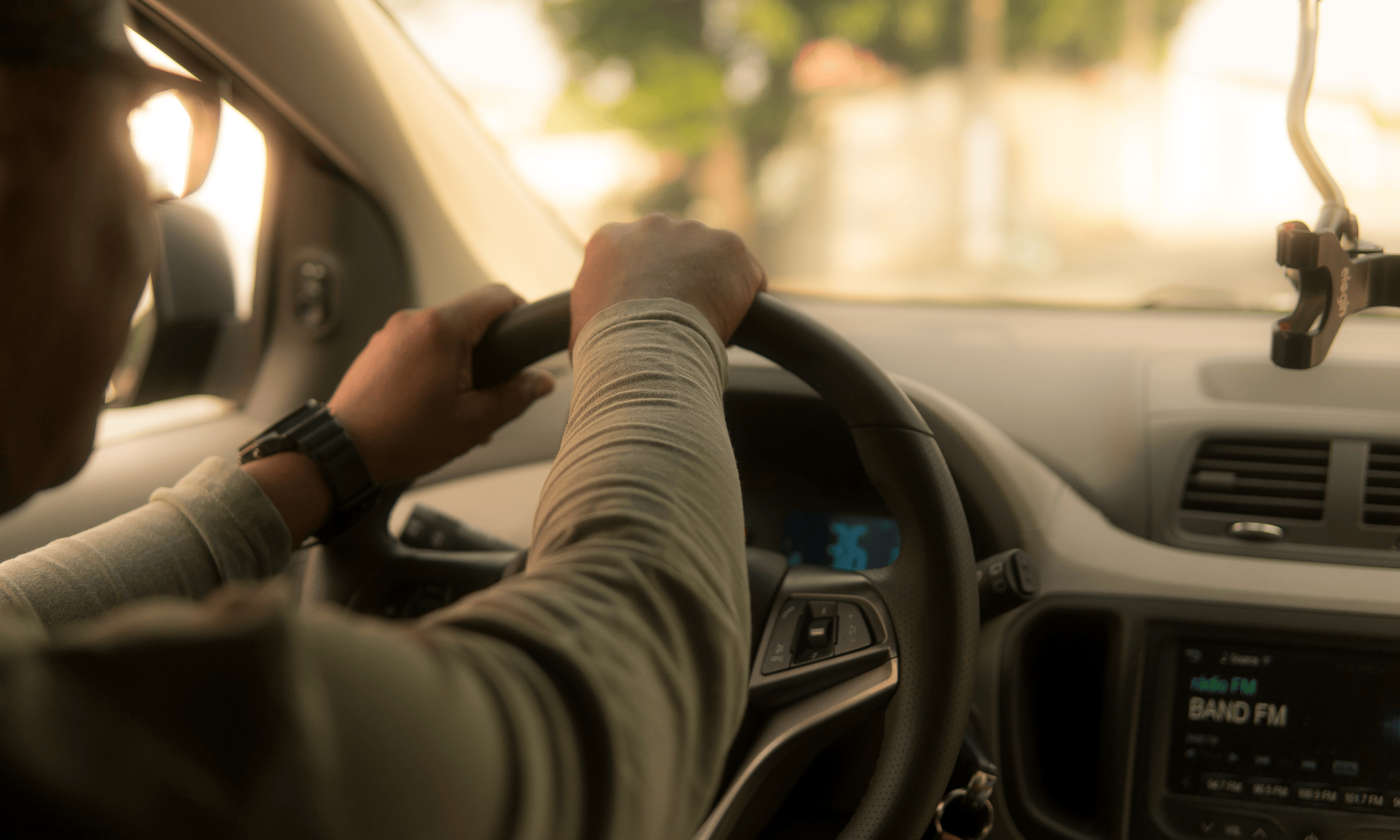San Bernardino Rideshare Accident
Every day, thousands of people in San Bernardino rely on Uber and Lyft to get around town. But when accidents happen, you need a dedicated San Bernardino rideshare lawyer on your side. Rideshare services have become a convenient and popular option, but convenience can come at a cost. When an Uber or Lyft driver makes a careless mistake or another motorist causes a crash, innocent passengers, pedestrians, and other drivers can suffer serious injuries.
If you were injured in a rideshare accident in San Bernardino, you need experienced legal help right away. The Law Offices of Larry H. Parker understands how rideshare insurance works, how app status impacts liability, and what steps are needed to secure maximum compensation. We are ready to step in, investigate your crash, and hold the right parties accountable so you can focus on healing.
Let our San Bernardino rideshare accident lawyers help you get justice. We offer free consultations and do not charge any fees unless we win your case.
Contact The Law Offices of Larry H. Parker today for your free consultation.
Who Is Responsible for a Rideshare Accident in San Bernardino
Understanding liability in a rideshare accident is more complex than in a typical car accident. This complexity arises because Uber and Lyft drivers are considered independent contractors, not employees. Therefore, the driver’s app status at the exact moment of the crash plays a crucial role in determining who is responsible for paying compensation.
Why Rideshare Drivers Are Classified as Independent Contractors
Uber and Lyft drivers are typically classified as independent contractors rather than employees. This classification means that rideshare companies often try to limit their legal responsibility for accidents caused by their drivers. According to the California Department of Industrial Relations, this classification can affect liability and compensation claims. Our team is experienced in challenging these classifications to hold all parties accountable and ensure you get the compensation you deserve.
How the Driver’s App Status Impacts Liability
The rideshare driver’s app status at the time of the accident is a critical factor in determining which insurance coverage applies. Depending on whether the driver was logged into the app, waiting for a ride request, or actively transporting a passenger, the level of coverage and the responsible party can change significantly. Understanding these different scenarios is key to ensuring you receive the compensation you need to cover medical bills, lost wages, and other damages. Our team will help you gather the digital evidence necessary to prove the driver’s status at the time of the crash.
When the Driver is Not Logged Into the App
If the rideshare driver was not using the Uber or Lyft app at the time of the accident, then rideshare insurance does not apply. Only the driver’s personal auto insurance would cover the damages. This often results in lower coverage, making it harder for victims to recover full compensation. The California Department of Insurance offers guidance on how personal auto policies apply in these situations.
When the Driver is Logged In but Hasn’t Accepted a Ride
If the driver is logged into the app but hasn’t accepted a ride, a limited third-party liability policy is in effect. This coverage is often insufficient to cover all damages, especially in accidents with multiple victims. According to Uber’s Insurance Overview, this policy typically offers up to $50,000 per person for bodily injury, $100,000 total per accident, and $25,000 for property damage. Many victims are surprised to find out that this coverage may not fully cover medical bills and lost wages.
When the Driver is on an Active Ride
Once the driver accepts a ride request or is transporting a passenger, Uber and Lyft provide up to $1 million in liability coverage, which includes uninsured and underinsured motorist protection. This high-level coverage ensures that passengers, pedestrians, and other drivers can seek full compensation for injuries and damages. The National Highway Traffic Safety Administration stresses the importance of securing evidence of the driver’s app status to determine the correct insurance policy.
Multiple Parties Could Be Liable
Rideshare accidents often involve multiple parties beyond the driver, including the rideshare company itself, other drivers on the road, or even the vehicle manufacturer in cases involving mechanical failures. The NHTSA Recalls page highlights the role of defective vehicle components in crashes, which can trigger product liability claims.
Our Legal Team Knows How to Hold All Parties Accountable
At The Law Offices of Larry H. Parker, our San Bernardino rideshare accident attorneys thoroughly investigate each case to determine all potentially responsible parties. We gather app data, trip logs, driver records, and vehicle maintenance reports to build a strong claim. This comprehensive approach helps ensure you receive the maximum compensation allowed under the law.
Why the Driver’s App Status Matters
One of the most crucial aspects of a rideshare accident case is determining the Uber or Lyft driver’s app status at the time of the crash. This status dictates which insurance policy applies and how much compensation might be available. Insurance companies often exploit app status confusion to minimize payouts, making it vital to understand the different stages and how they affect your case.
Different Stages of Driver App Status
Determining which phase the rideshare driver was in at the time of the crash is critical to figuring out who pays for your damages and how much coverage is available. Whether the driver was offline, logged into the app, or actively transporting a passenger significantly affects the insurance policy that applies. Our legal team investigates every detail of the driver’s app activity to ensure that no responsible party avoids liability and that you receive the full compensation you deserve.
Offline Drivers
When a rideshare driver is not logged into the Uber or Lyft app, they are considered a private driver rather than a rideshare operator. This means only their personal auto insurance policy applies. Unfortunately, personal policies in California often carry minimal coverage, leaving accident victims with inadequate funds for medical bills and other damages. According to the California Department of Insurance, California drivers are required to carry minimum liability coverage of $15,000 per person and $30,000 per accident for bodily injury, plus $5,000 for property damage. These limits can be quickly exhausted in serious accidents, highlighting the importance of investigating the driver’s app status.
Drivers Logged In But Waiting for a Ride
When a driver is logged into the app but hasn’t yet accepted a ride request, Uber and Lyft provide a limited third-party liability policy. This policy includes up to $50,000 per person for bodily injury, $100,000 per accident for bodily injury, and $25,000 for property damage. While this coverage is better than relying solely on the driver’s personal insurance, it often falls short in cases involving severe injuries or multiple victims. According to Uber’s Insurance Overview, this limited policy helps cover injuries and property damage caused to third parties while the driver is waiting for a ride request. Unfortunately, many victims assume they are fully protected, only to discover the coverage is insufficient.
Why Victims Often Receive Less Compensation
Victims frequently underestimate how quickly medical expenses can exceed these limits, especially in cases involving surgery, long-term rehabilitation, or multiple passengers. The National Safety Council reports that the average cost of medically consulted injuries from car crashes in 2021 was over $24,000, meaning even moderate injuries can exhaust the limited policy. This underscores the need for a thorough investigation and prompt legal action.
Drivers Transporting a Passenger
Once a rideshare driver accepts a ride request or has a passenger in the car, the highest level of insurance coverage applies. Uber and Lyft provide up to $1 million in liability coverage, plus uninsured/underinsured motorist protection and contingent comprehensive and collision coverage (if the driver’s policy includes it). According to Lyft’s Insurance Policy, this extensive coverage is designed to protect everyone involved in the accident, passengers, pedestrians, and other drivers alike.
How This Protection Helps Accident Victims
This higher tier of coverage can be crucial for victims facing extensive medical bills, lost wages, and other financial losses. According to the National Highway Traffic Safety Administration, over 4.5 million people were injured in motor vehicle crashes in 2021 alone. Having access to the rideshare company’s $1 million policy can make the difference between full compensation and devastating financial strain.
Why Preserving App Status Evidence is Crucial
Insurance companies often try to argue that a driver wasn’t properly logged into the app or was in the wrong phase to deny or reduce coverage. Preserving evidence of the driver’s app status, such as screenshots, trip logs, and GPS data, can be critical in proving your case. The Federal Motor Carrier Safety Administration highlights the importance of digital records in crash investigations, including rideshare accidents.
How Our Legal Team Secures Vital Evidence
At The Law Offices of Larry H. Parker, we act quickly to obtain app data, digital ride receipts, and GPS logs before they can be deleted or altered. This evidence is key to establishing the driver’s status and unlocking the appropriate insurance coverage. Our proactive approach ensures that you receive the maximum compensation available under California law.
How Multiple Parties Can Be Liable in a San Bernardino Rideshare Crash
Rideshare accidents can be significantly more complex than typical car crashes because liability may extend beyond just the Uber or Lyft driver. Depending on the circumstances, multiple parties, including other drivers, the rideshare company, vehicle manufacturers, and even government entities, might share responsibility. Identifying all potentially liable parties is essential for recovering full compensation.
Rideshare Companies May Be Liable for Hiring Unqualified Drivers
Uber and Lyft often argue that their drivers are independent contractors, but that doesn’t always shield them from legal responsibility. If the rideshare company failed to properly screen a driver or ignored a history of reckless driving, they could be held liable for negligent hiring or retention. According to the California Public Utilities Commission (CPUC), transportation network companies (TNCs) like Uber and Lyft are required to conduct background checks on all drivers to ensure public safety.
Failure to Screen Drivers for Dangerous Histories
If a driver had a record of DUIs, suspended licenses, or repeated complaints, and Uber or Lyft failed to take appropriate action, the company might be legally accountable. The California Department of Motor Vehicles provides guidance on driver safety records, which can be critical evidence in these cases. Our team investigates DMV records, previous civil claims, and rideshare company complaints to identify any red flags.
Another Driver May Have Been at Fault
Not every rideshare accident is caused by the rideshare driver. In many cases, another motorist’s reckless or negligent behavior, such as running a red light, driving under the influence, or texting while driving, causes the crash. In these cases, a standard auto liability claim against that driver’s insurance can be pursued. According to the Insurance Information Institute, California requires all drivers to carry liability insurance, but many drivers carry only the minimum limits, which may not cover all your damages.
Filing a Claim Against the At-Fault Driver
When the at-fault driver is underinsured or uninsured, we can often activate Uber or Lyft’s uninsured/underinsured motorist coverage to cover the remaining damages. This coverage is essential to ensure that you are fully compensated for medical bills, lost wages, and other losses, even if the responsible driver lacks adequate insurance.
Vehicle Manufacturers May Be Liable for Defects
Sometimes, a rideshare crash is caused by a mechanical failure rather than driver error. Defective brakes, faulty steering, or tire blowouts can all contribute to catastrophic accidents. When a design flaw or manufacturing defect is to blame, the vehicle manufacturer or the part supplier can be held responsible under California’s product liability laws. The National Highway Traffic Safety Administration (NHTSA) Recalls page helps identify whether a vehicle or component was subject to a recall for safety issues.
Investigating Vehicle Defects
Our legal team works with automotive engineers to inspect the vehicle’s condition, maintenance records, and recall history. This allows us to determine whether a defective part played a role in the crash and pursue compensation from the manufacturer or supplier.
Poor Road Conditions May Create Government Liability
Hazardous road conditions, such as potholes, broken traffic signals, or unsafe construction zones, can contribute to rideshare accidents. When these conditions are caused by poor maintenance or negligent design, government entities like the City of San Bernardino or Caltrans might be liable. The California Department of General Services outlines the process for filing a claim against a public agency for injuries caused by dangerous road conditions.
Holding Government Agencies Accountable
Claims against government agencies are subject to strict deadlines and procedural rules, making immediate legal action crucial. Our attorneys have extensive experience navigating these complex cases, ensuring that all responsible parties are held accountable for your injuries.
Types of Compensation Available After a Rideshare Accident in San Bernardino
When you’re injured in a rideshare accident in San Bernardino, the financial and emotional impact can be overwhelming. Medical bills, lost wages, pain and suffering, and other expenses can add up quickly. Fortunately, California law allows accident victims to recover compensation for a wide range of damages, helping them rebuild their lives after a crash.
Emergency Medical Treatment After the Crash
Immediately following a rideshare accident, many victims require emergency medical care, including ambulance transport, emergency room services, diagnostic imaging, and even surgery. According to the Centers for Disease Control and Prevention (CDC), injury-related ER visits and hospitalizations cost billions of dollars annually in the United States. These costs can place an enormous burden on victims and their families. Our legal team ensures that every dollar you spend on emergency care is included in your claim.
Ongoing and Future Medical Care
Some injuries, such as traumatic brain injuries, herniated discs, or nerve damage, require long-term medical treatment. This might include physical therapy, home health care, or adaptive equipment. The National Institute of Neurological Disorders and Stroke (NINDS) emphasizes the importance of planning for future medical needs, particularly in cases involving permanent disability. We work with medical experts to estimate these ongoing costs and include them in your claim to ensure you receive full compensation.
Missed Paychecks and Lost Income
Many rideshare accident victims are unable to work for days, weeks, or even months after their injury. This loss of income can make it difficult to pay for rent, groceries, and other necessities. According to the U.S. Bureau of Labor Statistics (BLS), the average weekly earnings in California are among the highest in the nation, so even a few weeks of missed work can have a significant financial impact. Our attorneys carefully document your lost wages and fight to recover every dollar you’re owed.
Long-Term Loss of Earning Capacity
Serious injuries can have lasting effects on your ability to work. You might need to reduce your hours, change careers, or stop working altogether. The Social Security Administration (SSA) outlines how permanent disabilities can impact earning potential, particularly in physically demanding jobs. Our team collaborates with vocational experts and economists to calculate your long-term loss of earning capacity and ensure that these future losses are fully accounted for in your claim.
Physical Pain and Discomfort
Physical pain from a rideshare accident is not just an inconvenience, it’s a recognized legal damage that deserves compensation. From whiplash to broken bones to chronic nerve pain, the physical effects of a crash can impact your daily activities and overall quality of life. The American Academy of Pain Medicine (AAPM) highlights how chronic pain can interfere with sleep, work, and mental health, further underscoring the importance of including pain and suffering damages in your claim.
Psychological and Emotional Trauma
Many rideshare accident victims experience emotional distress, including post-traumatic stress disorder (PTSD), anxiety, depression, and insomnia. The National Institute of Mental Health (NIMH) reports that motor vehicle crashes are a leading cause of PTSD and other psychological injuries. These mental health effects can be just as debilitating as physical injuries, making it crucial to account for them in your compensation claim.
Damage to Your Vehicle or Other Property
If your personal vehicle or other belongings were damaged in the crash, you can seek compensation for repairs or replacement. This includes not only your car but also items such as phones, laptops, and luggage that may have been inside the vehicle. According to the National Association of Insurance Commissioners (NAIC), insurance companies often downplay property claims, so having an experienced attorney on your side can help you recover the full value of your losses.
Punitive Damages for Reckless Behavior
In cases involving extreme negligence, such as drunk driving, distracted driving, or intentional misconduct, the court may award punitive damages. These damages are intended to punish the wrongdoer and discourage similar behavior in the future. Under California Civil Code Section 3294, punitive damages are available when a defendant’s conduct is especially harmful or reckless.
Why Rideshare Accidents Happen So Often in San Bernardino
Rideshare services like Uber and Lyft offer convenient transportation options for San Bernardino residents and visitors. However, the nature of the rideshare industry and the city’s unique traffic conditions can lead to a high number of accidents. Understanding the causes of these crashes is crucial for preventing them and holding the responsible parties accountable.
Distracted Driving Behind the Wheel
One of the leading causes of rideshare accidents is distracted driving. Rideshare drivers depend heavily on their smartphones to accept rides, view maps, and communicate with passengers. This constant interaction with technology can divert their attention from the road. The National Highway Traffic Safety Administration (NHTSA) reports that distracted driving claimed 3,522 lives in 2021 alone.
Using the App While Driving
Drivers frequently glance at their phones to accept rides, check navigation routes, and respond to passengers. This behavior increases the likelihood of accidents, especially in busy areas like downtown San Bernardino or near popular venues such as the National Orange Show Event Center.
Legal Requirements for Safe Driving
According to the California Vehicle Code Section 23123, drivers are prohibited from using handheld devices while driving. Violations of this law can strengthen your case against a negligent driver.
Fatigued or Overworked Drivers
Many rideshare drivers work long hours, often driving late into the night or after already working another job. Fatigue impairs reaction times, decision-making, and overall driving ability, increasing the risk of crashes. The Centers for Disease Control and Prevention (CDC) warns that drowsy driving is as dangerous as drunk driving.
Sleep Deprivation and Accident Risks
Studies from the CDC show that being awake for 18 hours or more can impair driving as much as having a blood alcohol concentration (BAC) of 0.05%. Fatigued rideshare drivers navigating San Bernardino’s busy streets and freeways often put themselves and others in danger.
Speeding to Maximize Profits
Rideshare drivers often feel pressure to complete rides quickly to boost their earnings, leading to excessive speeding. This practice is especially dangerous in congested areas or near construction zones, where sudden stops or changes in traffic patterns are common.
The Dangers of Speeding
According to the NHTSA, speeding contributed to 29% of all traffic fatalities in 2021. High-speed collisions are more likely to result in severe injuries or fatalities, making it critical to hold speeding rideshare drivers accountable.
Unfamiliarity with San Bernardino Roads
Not all rideshare drivers are familiar with the San Bernardino area. Many rely solely on GPS navigation, which can lead to last-minute lane changes, abrupt stops, or missed exits. These sudden maneuvers often confuse other drivers and create hazardous conditions.
Dangerous Intersections and Roadways
Neighborhoods like Del Rosa, Arrowhead, and Highland often have complex intersections and heavy pedestrian traffic. The California Office of Traffic Safety (OTS) highlights that unfamiliarity with local roads is a common factor in intersection-related crashes. Our team investigates whether a driver’s unfamiliarity contributed to your accident.
Unsafe Pickups and Drop-Offs
Rideshare drivers often stop in unsafe locations, such as in traffic lanes, near busy intersections, or in red zones, to pick up or drop off passengers. These stops can block bike lanes, force pedestrians into traffic, or create multi-vehicle collisions.
Municipal Regulations for Rideshare Operations
San Bernardino’s local ordinances often restrict where rideshare vehicles can legally stop. However, enforcement of these rules is inconsistent, leaving passengers and other drivers vulnerable. The San Bernardino City Public Works Department provides resources on safe driving and city regulations.
Speak With a San Bernardino Rideshare Accident Lawyer Today
If you’ve been injured in a rideshare accident in San Bernardino, don’t wait to get the legal help you need. Medical bills and lost wages can pile up fast, and insurance companies are already working to protect themselves, not you. At The Law Offices of Larry H. Parker, we’re here to fight for your rights and secure the compensation you deserve.
Our team brings decades of experience handling complex rideshare accident cases. We know how to gather the evidence that matters, prove app status, and hold every responsible party accountable. Let us focus on winning justice for you, so you can focus on your recovery.
Call us today at (310) 736-6869 or visit www.carcrashlawyercalifornia.com to schedule your free, no-obligation consultation.
Practice Areas
Trust UsWith Your Personal Injury Claim
If you or a loved one have been injured, the Law Offices of Larry H. Parker will fight for you every step of the way. We will give our all to secure the compensation you rightfully deserve.
Contact usfor a free consultation.
Phone: (310) 736-6869
